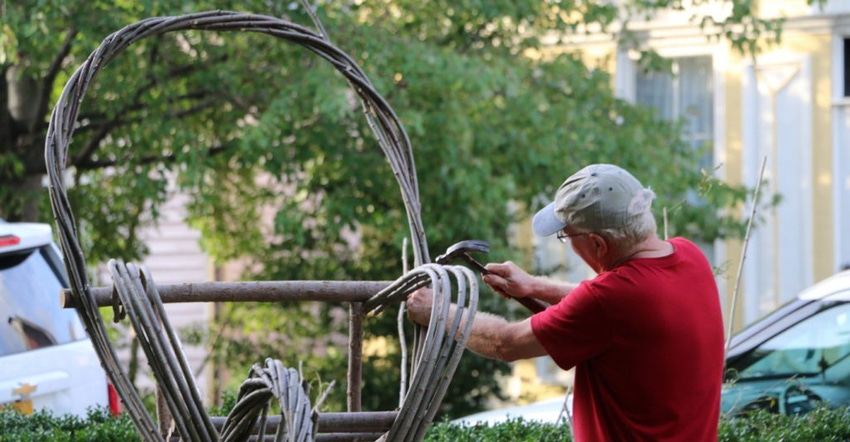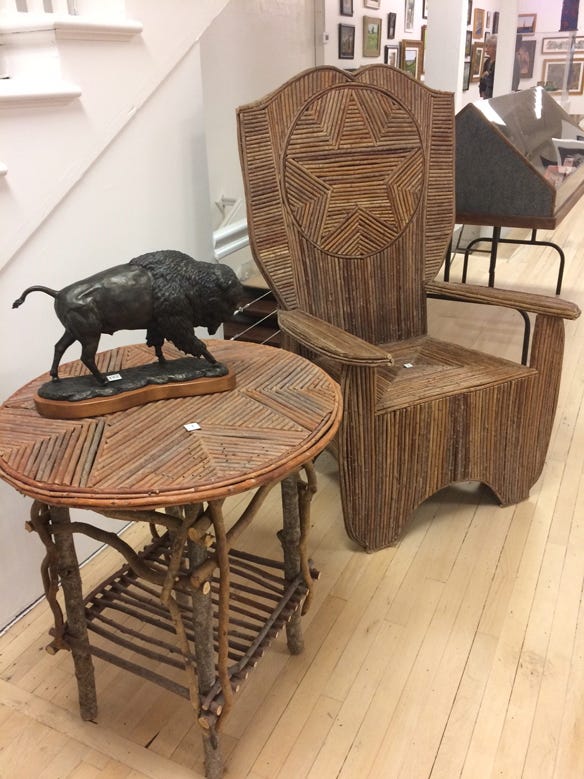January 13, 2022

Greg Adams began his journey of weaving willow branches into home furnishings on a fishing trip. He crafted a small willow basket as he sat on the riverbank. Little did he know that this pastime would eventually transform itself into a small business.
Adams searched the library for books about basket making and coupled that with knowledge of carpentry and barrel making gained from his family. Once Adams mastered weaving baskets, he began creating larger pieces such as trellises and chairs. He fell into a rhythm of producing willow furnishings and soon relied on the craft to relieve stress from his job as a social worker.
Adams worked from his Victorian home for the first 11 years. In 1994, he rented a workshop and retail shop in Lapel, Ind. Today, he crafts tables, chairs, trellises, arbors and more.
It’s hard to say how many pieces he has made or how long he spends on each piece, Adams says. He doesn’t keep track of numbers and likes to lose himself in his work.
“I don’t have any supervision,” Adams says. “It’s just me. When I was a social worker, I always had to pass things through people on committees, and this is just me.”
The process of creation
Adams begins crafting his pieces by harvesting willow branches from nearby groves. Each year, he harvests saplings from the same groves so that after each branch is harvested, it will grow back at the same diameter, allowing him to work with uniformly sized branches. An added perk to harvesting in the same locations are the relationships he forms with farmers.
“I have a lot of contact with farmers because many willows I get are in farm fields, and they’re a nuisance,” he says. “But I work it out so I can go back year after year and do the same thing. It’s a win-win.”

Adams has begun distributing pussy willow saplings to community members to encourage new tree growth. Adams sees himself as somewhat of a Johnny Appleseed of pussy willow trees.
Once Adams harvests his willow, he trims it to size and begins assembly. Adams notes that willow is easily bendable when it’s green. Its bendability depends primarily on the temperature during harvest. Higher temperatures cause the willow to be stiffer, whereas lower temperatures make for more flexible willow.
Willow characteristics
Black willow, or Salix nigra Marsh, is the only willow species durable and large enough to produce lumber. According to Lenny Farlee, Extension forester with forestry and natural resources at Purdue University, willows are a complex group of trees, with many different species.
“The black willow is one you can find mostly in wetlands near ponds, along stream courses — any place where we’ve got moist soils and plenty of sunlight,” Farlee says. Willows typically can’t tolerate shade and need full sunlight.
“The branches are pretty fine and quite limber, and so that can make weaving willow branches pretty easy compared to some other species that are a lot stiffer and just don’t bend nearly as easily,” Farlee notes.
He says willow may be steamed and bent into shapes using forms. Regarding sustainability, Farlee says willow resprouts rapidly and prolifically when cut.
To learn more about Adams and to see his creations, visit willowbygregadams.blogspot.com. Email him at [email protected] or call 317-645-7149.
Titus is a senior in agricultural communications at Purdue University.
You May Also Like




